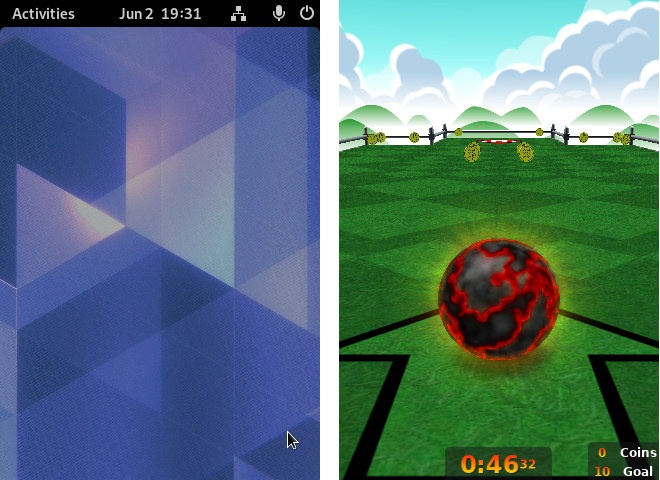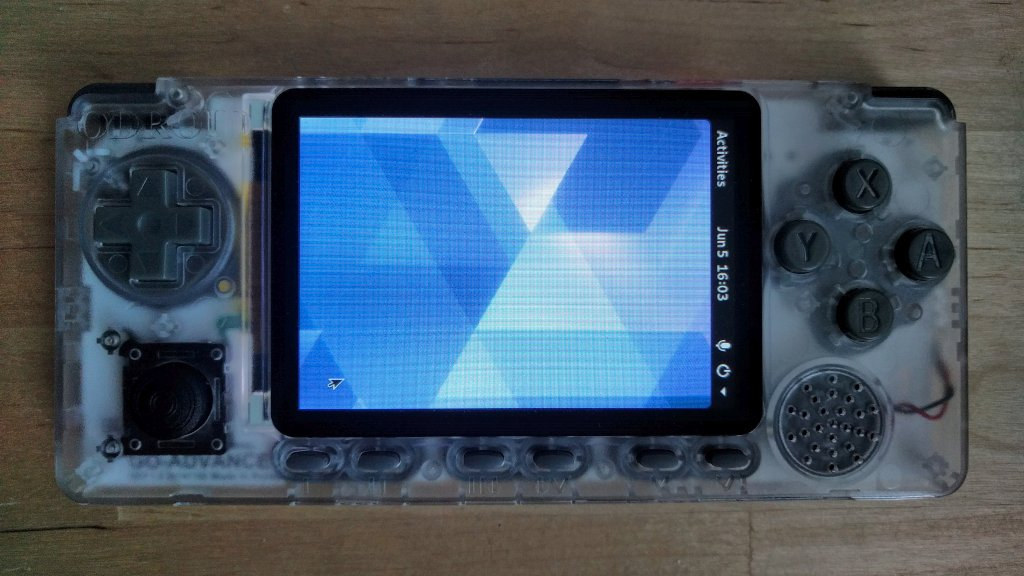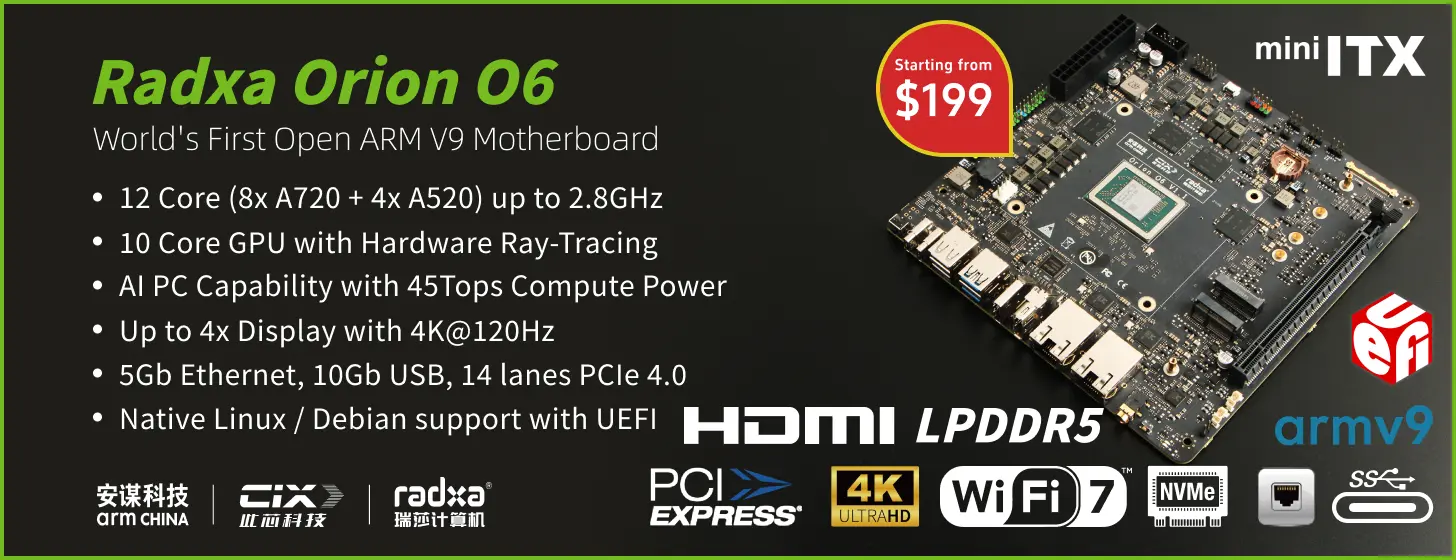We first wrote about Panfrost open-source Arm Mali GPU driver getting initial support for Mali-G31 Bifrost GPU in late April, when engineers at Collabora managed to run some basic demos.
Progress has been fast-paced as the company has now implemented support for all major features of OpenGL ES 2.0 and some features of OpenGL 2.1. That means hardware-based on Arm Mali-G31 GPU such as ODROID Go Advance (used for testing) can run Wayland compositors with zero-copy graphics, including GNOME 3, every scene in glmark2-es2 benchmarks, and some 3D games such as Neverball. All without any binary blobs.
The company also claims to support hardware-accelerated video players mpv and Kodi. The way it should work is that while Panfrost driver renders the user interface, Amlogic open-source video decoder developed by BayLibre handles hardware video decoding.
All changes are already included in upstream Mesa with no out-of-tree patches required, and Bifrost support can be enabled using PAN_MESA_DEBUG=bifrost environmental variable.

There are many other hardware platforms with SoCs based on Mali-G31 GPU besides Rockchip RK3326 powered ODROID GO Advance game console, including Amlogic S905X3/S905D3 SBCs such as ODROID-C4 or Khadas VIM3L, some Allwinner H313/H616 powered TV boxes, and plenty of recent Amlogic based TV boxes including SDMC DV8919 hybrid TV box or Google ADT-3 developer kit.
Mali-G31 GPU is not the only Bifrost GPU integrated into Arm SoCs, and processors with Mali-G3x, Mali-G5x, or Mali-G7x GPUs will eventually be supported. Panfrost driver has also been compatible with Midgard GPUs such as the Arm Mali-T860MP4 GPU found in Rockchip RK3399 processor for a while.

Jean-Luc started CNX Software in 2010 as a part-time endeavor, before quitting his job as a software engineering manager, and starting to write daily news, and reviews full time later in 2011.
Support CNX Software! Donate via cryptocurrencies, become a Patron on Patreon, or purchase goods on Amazon or Aliexpress. We also use affiliate links in articles to earn commissions if you make a purchase after clicking on those links.






It will be really interesting to test some games based on unreal open source engine with panfrost 🙂
This reminded me that I intended to order some of the odroid thingies. So I go to the site and they are sold out. :'(
The ordering window for the GoA was very narrow. They ran out quickly. There is a new revision out (extra shoulder buttons, etc.) but I think it sold out as well. I’ll let you know the next time I see them in stock. (nope, I was wrong. Out of stick, too).
Looking at the web page. Looks like you’re looking at the original GoA page which is discontinued. The new versions are shipping (slowly):
https://www.hardkernel.com/product-category/odroid-board/rockchip/
Very narrow ordering window indeed. I pounced on the opportunity on 25th May and my shipment from HardKernel (2xOdroid-Go Advance Black Edition & 1 x Odroid-N2) arrived in rural New South Wales, Australia yesterday, 9th June. Pretty good, under the circumstances.
Why there is no som/SBC with the RK3326?
PX30 is about the same as RK3326. There’s just a small difference, dual VOP.
There’s at least some PX30 modules:
https://www.cnx-software.com/2020/02/22/adlink-industrial-pi-i-pi-smarc-development-kit-features-rockchip-px30-soc/
https://www.cnx-software.com/2019/04/01/arbor-som-rp301-rockchip-px30-som-retail-kiosks/
There are also some PX30 SBCs in development from SECO and others.
Rockchip RK3308 is a stripped-down version of RK3326/PX30, and Rock Pi S SBC should be available by now
Currently playing with a Panfrost TV box under manjaro I guess I should update mesa then
Mali Bitfrost GPU (gen1/2) are Mali-Gxx not G3x. First announced model was Mali-G71 in may 2016, if I am not wrong. G31 was used, probably because it was available on one or few, well OpenSource/mainline Linux supported SoC, so a good base to progress quickly on driver.